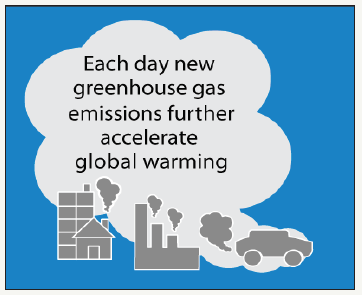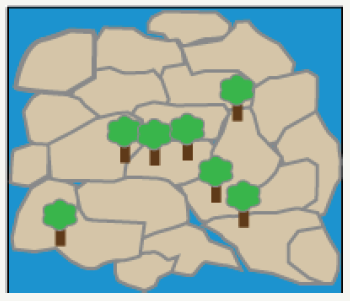- Submissions

Full Text
Environmental Analysis & Ecology Studies
Global Warming-An Emerging Concern
Akshey Bhargava1* and Swati Bhargava2
1Department of Civil Engineering, Global Institute of Engineering and Technology, India
2AA School of Architecture, London, UK
*Corresponding author: Akshey Bhargava, Professor Department of Civil Engineering, Global Institute of Engineering and Technology, Hyderabad,India
Submission: May 29, 2018; Published: July 02, 2018

ISSN 2578-0336 Volume3 Issue3
Introduction
Global warming may be broadly defined as an increase in temperature of the Earth’s surface including land and water coupled with its atmosphere. Average temperatures around the world have increased by 0.75°C (1.4°F) over the last 100 years but 66 percent increase has witnessed since 1975 [1]. The predominant causal factor presently is accumulation of greenhouse gases in the atmosphere produced by human activities [2].However, the natural greenhouse effect makes it possible for humans and many other life forms to exist by balancing the Earth’s temperature at a safe level [3] but, since the Industrial Revolution the greenhouse effect has resulted in increase of Earth’s average temperature by almost 1°C thereby causing global warming [4].
Cause of Global Warming
figure 1: Showing global warming.

The predominant cause of Global warming is on account of release of carbon dioxide (CO2), other air pollutants and greenhouse gases into the atmosphere on account of human activities where sunlight is absorbed by them along with solar radiation that have bounced off the earth’s surface. In fact these radiations should have reflected back into space but these pollutants trap the heat resulting into hotter planet. This phenomenon is known as greenhouse effect which causes global warming. A symbolic diagram of global warming is shown in Figure 1.
Effects of Global Warming
- There are many effects of global warming but some of them are given here under.
- Melting glaciers thereby rising sea levels resulting into coastal flooding.
- Severe droughts may occur resulting into water shortages, increase the risk of wildfires and desertification as reflected in Figure 2.
- Forests, agriculture fields and cities may lead to troublesome new pests, heat waves, heavy downpours, and increased flooding, Stronger hurricanes and cyclones thereby damage agriculture and fisheries.
- Many plant and animal species like coral reefs and Alpine meadows may lead to extinction.
- Increased growth of pollen-producing ragweed along with higher levels of air pollution, increased pathogens and mosquitoes lead to allergies, asthma and infectious disease.
figure 2: Showing desertification.

Conclusion
Global warming is an emerging global issue world over and need to be effectively addressed technologically, economically, socially and politically in an integrated manner with all sincerity and commitment. An approach to reduce generation of green house gases needs to be linked with economic benefits in order to attain sustainability. Adequate research needs to be undertaken world over in respect of all the relevant parameters and should be made public to create awareness.
References
- Global temperatures. UK Met Office.
- Le Treut, Somerville HR, Cubasch U, Ding Y, Mauritzen C, et al. (2007) Historical Overview of Climate Change. In: Climate Change 2007: The physical science basis. contribution of working group I to the fourth assessment report of the intergovernmental panel on climate change. Cambridge University Press, Cambridge, United Kingdom and New York, USA.
- UK Met Office Warming (2011) A guide to climate change. Hadley Centre, UK.
- Hansen J, Sato M (2012) Paleoclimate implications for human-made climate change. In: Climate change inferences from paleoclimate and regional aspects. Springer, Germany.
© 2018 Akshey Bhargava. This is an open access article distributed under the terms of the Creative Commons Attribution License , which permits unrestricted use, distribution, and build upon your work non-commercially.
 a Creative Commons Attribution 4.0 International License. Based on a work at www.crimsonpublishers.com.
Best viewed in
a Creative Commons Attribution 4.0 International License. Based on a work at www.crimsonpublishers.com.
Best viewed in 







.jpg)






























 Editorial Board Registrations
Editorial Board Registrations Submit your Article
Submit your Article Refer a Friend
Refer a Friend Advertise With Us
Advertise With Us
.jpg)






.jpg)














.bmp)
.jpg)
.png)
.jpg)










.jpg)






.png)

.png)



.png)






